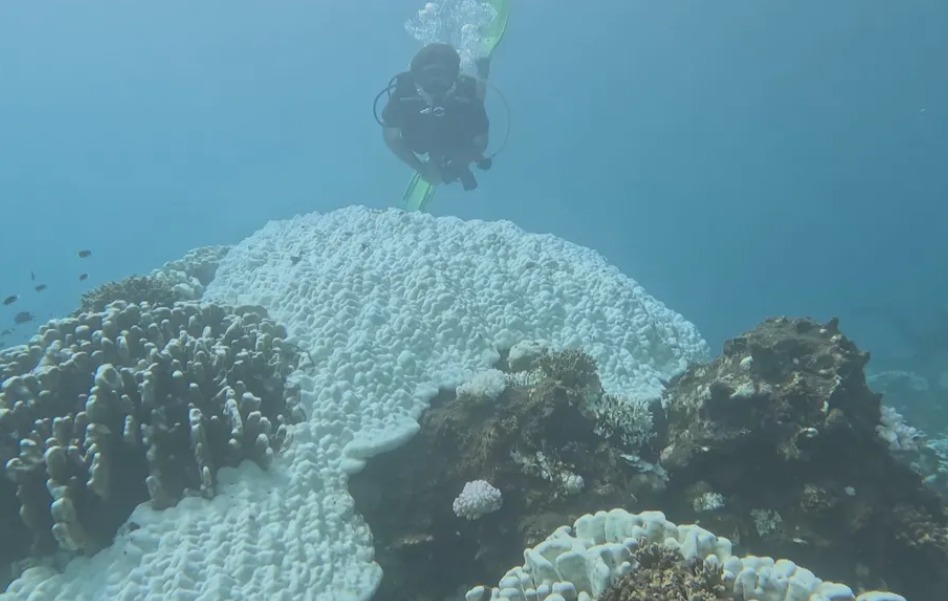Already badly affected over the past forty years, the coral reef of Reunion Island suffered greatly in 2025 due to high ocean temperatures, causing bleaching, and the impact of cyclone Garance.
During a dive at Cap La Houssaye, Jean-Pierre Quod did not come back with good news. An activist with the association Reef Check, which studies Reunion’s coral reef, he had just inspected one of the 45 pools targeted by the group to inventory species and track their evolution.
“There, the assessment is not good at all because I found no living coral, no sea cucumbers, and no crown-of-thorns starfish,” he notes. The absence of these animals, which are indicators of reef health, is not a good sign.
Watch the report by Réunion La 1ère:
Temperatures not seen in 40 years
“We will be doing this regularly on all Reef Check sites in Reunion to monitor how the reef system evolves, in relation to cyclone Garance and coral bleaching, but also regarding the crown-of-thorns starfish problem that died out two years ago,” explains this coral lover.
In the 20 years he has studied this environment, the enthusiast noticed marine temperatures in 2025 well above normal, especially during the austral summer, which promoted coral bleaching. The mercury reached average levels never seen since satellite readings began in 1985.
“In 2024, we were generally in a kind of marine heatwave. And in 2025, the peak marine heatwave was extremely high, the strongest we’ve ever had at Reunion,” he emphasizes.
Garance worsened the situation
This temperature rise was made worse in February by cyclone Garance and the associated heavy rains. “The most critical mortality zones we observed at Saint-Leu, La Saline, or Saint-Pierre are always where a ravine, an outlet, or a river comes down, and that’s where we get the most mudflow. So, in addition to bleaching, there is stress caused by water quality, smothering by mud,” explains Jean-Pierre Quod.
After such events, it takes 10 to 15 years for reefs to recover.
Sharp drop in coral cover
In the 1970s, coral cover in the lagoon and on the outer slopes was around 60%. By 2000, it had fallen to 40%.
“In 2022, it was rather 20-25% living coral, and with the 2025 bleaching and Garance impact, we will probably be around 10%. This is totally insufficient to continue providing what we call the ecological and ecosystem services of the reef,” warns the activist.
The only good news according to Reef Check is that these remaining 10% are “super-corals” that are resilient and must be both preserved and studied.
“Intense” bleaching across the entire reef
Alongside this community monitoring, the government, with Ifrecor, is conducting a study to “assess coral bleaching and associated mortality. This is the largest evaluation ever done at Reunion.”
Early results show that bleaching in 2025 is “intense” on all reef flats and outer slopes:
- Intense bleaching affecting about 60% of coral cover
- Low mortality so far, affecting 3% of coral cover
- Outer slopes are more severely affected (around 78% of coral cover) than reef flats (around 54%)
- All areas are heavily impacted, with spatial variation: reef flats most affected are in Saint-Gilles (76% of cover), and the most affected outer slopes are in Grand-Bois and Grande Anse (92%)
- The Etang Salé reef, especially its reef flat, is least affected but still around 40%
- Acropora corals, which shelter many organisms, are among the most affected
- Total coral mortality linked to bleaching will be assessed this winter when water temperatures drop
According to some estimates, the presence of a healthy reef alone generates about 45 million euros per year for the island’s economy by supporting activities such as tourism, diving, and fishing.



